
“Sustainability”, the flavour-of-the-month?
It seems everyone is talking about sustainability these days. We’ve recently been in at least three webinars on sustainability. Wine regions are announcing sustainability programmes. Wine producers and other wine industry companies (retailers, for example) go sustainable.

That is, of course, good. But will the flavour-of-the-month next year be something different? It should not be. Sustainability is important. And it is something that you will have to work on in the long term. That we will all have to work on long-term.
But there are many issues around sustainability.
Some people think sustainability is an alternative to being “organic” (certified). It is not unusual to hear the comment “winery XYZ is more clever, they are sustainable instead of the straight-jacket of organics”. This is a mistake. There is no conflict or contradiction opposing sustainable with organics. Sustainable cannot replace organics. Nor should sustainable wine production be seen as some kind of “organics light”, or first phase in converting to organics.
Instead, sustainable wine production and organic wine production are mainly complementary concepts. Both are good for the environment. But they focus on different things. To put it simply, organics is mainly about what tools, techniques and substances you use in the vineyard and in the wine cellar. Sustainability is mainly about resource use, biodiversity and emissions. The two concepts are partially overlapping, but many producers chose, with good reason, to be both sustainable and organic.
Certification for sustainability is complicated. There are many different certifications for sustainability and they are all slightly different. And almost none is “official”. It’s difficult for the consumer to understand. New Zealand is one of the countries that have come furthest in sustainability and they have only one certification. Maybe others should follow?
Organics, on the other hand, is simple. There is only one definition of what “organic” means (at least if we stay in the EU and most of the rest of the world, excepting the US), and it is enshrined in official EU law. If it is “organic” we know exactly what the rules say.
A further complication is that it is not always easy to know what is good and what is bad. Is natural cork more sustainable than screw cap? Perhaps. “Buy local” is supposed to be sustainable. But it can cause less CO2 emissions to transport wine by ship from Chile to California than to truck it across the continent. Less greenhouse gas emissions for wine shipped from South Africa to Europe than by lorry from Italy to Sweden…?
There are not necessarily any easy and simple answers. No “yes, this is good. No, this is bad”. Maybe we – consumers – have to make a bit more of an effort to understand the issues if we want to help save the planet?
If you want to understand some of the issues better, you can read our feature article on sustainable wines (including links to in depth articles on organics too).
Christmas approaches. And winter is at full speed ahead.
What could be better then than thinking about a wine tour this spring? Or this fall. A Christmas present for someone else or maybe for yourself.
We have some really exciting wine tour destinations among the spring wine tours and the autumn wine tours.
We have also published the preliminary programs for the long-distance journeys to the southern hemisphere that we hope to be able to make in the winter of 2023. Chile-Argentina, South Africa and New Zealand. Three unforgettable wine tours.
Isn’t it so that we are all starting to long for some new discoveries these days?
If you want to discover the best in the wine regions and get some unforgettable memories, travel with one of the most experienced and most knowledgeable wine tour operators.
More info on our wine tours here.
Enjoy the Brief!
Britt & Per
If you appreciate what we do, you can help us:Tell your friends about the Brief or send it to them.
Like us and follow us on social media:
BKWine Magazine on Facebook | Wine Tours on Facebook
Twitter | Instagram | Linkedin | YouTube
What’s on at BKWine Tours
BKWine is also one of the world’s leading wine tour operators. Here’s what we currently have on our scheduled wine tour program:
- Bordeaux, April 20-24, 2022
- Champagne, May 4-8, 2022
- Bordeaux and Champagne, Sept 28 – Oct 6, 2022
- Champagne, Sept 28 – Oct 2, 2022
- Bordeaux, October 2-6, 2022
- Chile-Argentina, January 2023
- South Africa, February 2023
- New Zealand, March 2023
We also make custom designed wine tours.
We’re different than most other wine tour operators. We are people who know wine inside out, who travel constantly in wine regions, who write award winning books about wine. Who do this out of passion.
Our wine tours are different from others.
More in wine tours: BKWineTours.com.
A typical year we organise more than 30 wine tours to destinations across the world. In Europe: France, Italy, Spain, Portugal and more. World-wide: South Africa, Chile, Argentina, New Zealand. Thanks to our Scandinavian background we have a separate offer for the Scandinavian market. These are sometimes offered in English and also available as custom made tours. For example, these destinations:
Read our books
We have written eleven wine books. They have won awards from the Gourmand Awards, The International Organisation of Vine and Wine (OIV) and others.
Unfortunately, only one of them has been translated to English; the others are (so far) only available in Swedish. This is the one that is available in English:
Here’s the full list of our books:
- The Wonderful World of Wine
- Languedoc-Roussillon, the Wines of Southern France
- Champagne, the Wine and the Growers
News from the World of Wine
Short briefs on what’s been happening in the world of wine recently and other interesting things.
No more chemical weed control in Pomerol
Pomerol in Bordeaux is banning the use of chemical weed control. This is the first appellation in France to take this decision. The new rules were adopted on October 21 this year (2021). The new regulations state: “Chemical weed control is prohibited.
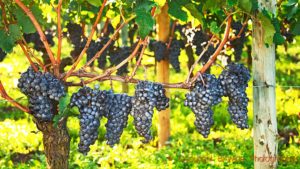
Weed may be controlled only by mechanical or physical means.“ As early as 2008, Pomerol restricted the use of chemical herbicides, so the decision did not come as a surprise to the chateaux. A prestigious region like Pomerol will probably not have any problems dealing with the extra cost that manual control of the weed entails.
Pomerol is not the first region in Europe, though, to do this. As early as 2018, DOCG Prosecco Conegliano Valdobbiadene (a small part of the bigger Prosecco region) banned the use of glyphosate in its vineyards. Glyphosate is the active substance in most herbicides, for instance, Round-Up. However, to what extent glyphosate is dangerous is under debate. Read more: Vitisphere.
Travel: Travel to Bordeaux on a wine tour with BKWine.
2,700-year-old winery discovered in Iraq
The cradle of wine stood in the area around present-day Armenia and Georgia. This is well known and widely accepted. Grape seeds and remnants of drinking vessels found indicate that this is where people made wine for the first time.
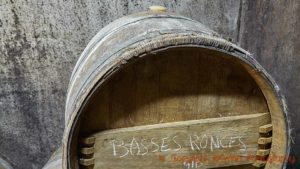
Both countries are still active wine producers. In October this year, a group of Italian and Kurdish archaeologists discovered the remains of a 2,700-year-old wine press in eastern Iraq. The press has probably been in a winery big enough to produce large volumes of wine. This is from the time of the Assyrian kings who ruled in the eighth century BC. The archaeologists found 14 installations used to crush grapes, extract the must and then transform it into wine. This is said to be the first discovery of its kind in Iraq. Read more: La RVF.
Now we no longer have to guess if an Alsace wine is dry or sweetish: new compulsory labelling
Buying Alsace wines has so far been something of a gamble if you do not already know the wine or the producer. Now, things will be easier. It is henceforth mandatory to indicate on the label whether the wine is dry, semi-dry, semi-sweet or sweet.
The decision was taken already in 2020 and it is binding from vintage 2021. If you are looking for dry wine and see the designation “sec” on the label, you know that the sugar content is a maximum of 4 grams per litre (or a maximum of 9 grams, but then the acidity per litre must not be less than 2 grams lower than the sugar content).
The producer can indicate the sugar content on the label in two ways. One way is to print the relevant term: sec, demi-sec (maximum 12 grams of sugar), moëlleux (between 12 and 45 grams) or doux (more than 45 grams). The second way is to use a grading scale. Read more (pdf): AVA-AOC.
Reduced Chinese wine imports in 2021
China’s wine import is falling. The Chinese drink less, in part because of the limited social life that has continued into this year. January to September this year (2021) saw a decrease in wine imports of 560 million USD compared to the same period in 2020.

The imported volume decreased by 17.7 million litres and ended up at 329.4 million litres. This is all the more remarkable given that international trade was very restricted in 2020, more so than in 2021.
The reduction has mainly affected Australian wines. Because of the punitive tariffs imposed by the Chinese on these wines in March 2021, Australia’s wine exports to China fell by 99% in an instant. Customs statistics show increased imports from the four biggest suppliers, France, Spain, Italy and Chile, but not enough to compensate for the Australian losses. Read more: Vino-Joy.
All Cava Superior will be organic by 2025
The DO Cava appellation in Spain has decided that from 2025, organic certification will be mandatory for cavas de guarda superior, the higher quality of cava. This category includes cavas reserva (with at least 18 months of ageing on the lees), gran reserva (at least 30 months) and cavas de paraje calificado (at least 36 months).
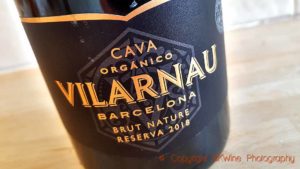
“Regular” cava (called cava de guarda) will not have this requirement. At least not yet. This category accounts for around 85% of the total cava production.
Sales of organic cava have increased by more than 245% in the last five years, from 4 million bottles in 2016 to 13.8 million in 2020. Organic cava now accounts for 6.4% of the total sales volume. But by 2025 it is likely to well exceed 15% of all cava. Read more (pdf): Cava.
The wine fair Wine Paris & Vinexpo Paris is back in 2022
We all hope that the pandemic calms down, not least those who organise large wine events. The big wine fair Wine Paris & Vinexpo, which took place for the first time in 2020, as a result of the merger between Wine Paris and Vinexpo, is now planned again for February 14-16, 2022.
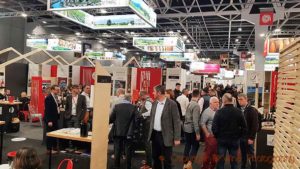
The wine fair will take place in the large exhibition halls at the Expo Porte de Versailles in central Paris.
The organisers expect a large turnout with 2,800 wine producers and wine houses, both new and well-established. An exciting feature is a collective stand called “Nouvelle Vague” (New Wave), reserved for young winegrowers who have not been in business for more than five years. The idea is to help them build a network of contacts. Here they can present their first wines and meet wine merchants and importers. A must for a trade fair visitor and a glimpse of what the future has to offer. Read more: Vinexposium.
Features of the Month
Articles and features published on BKWine Magazine and on our wine travel blog and photography blog in the last month.
Famous nobility in Tuscany, Ornellaia and Le Serre Nuove, but which is best?
Ornellaia has recently started selling its wine from 2018. An elegant vintage. But the vineyard also makes a “second wine”, Le Serre Nuove, perhaps slightly less ambitiously made and significantly less costly.

And maybe also a little less in need of staying for a long time in the cellar. We recently had the opportunity to compare a young and an old vintage of Ornellaia and of Le Serre Nuove. BKWine Magazine’s Sven-Olof Johansson gives us the results of that derby.
Read more in Sven-Olof Johansson’s article on BKWine Magazine: Ornellaia and Le Serre Nuove, the second wine holds the positions.
Best buys of top Bordeaux 2018, a BKWine selection | Britt on Forbes
We have tasted a wide range of the top echelons of red Bordeaux from 2018, the latest vintage released from the big chateaux. 2018 is an acclaimed vintage, but challenging weather meant the producers had to work hard for it. But in the end, the wines turned out very well.

Many of the wines we tasted are already enjoyable, but of course, you can keep them for long if you want. And some of them need a few years to soften the edges. Here’s our selection of the best among those we tasted.
Read more in Britt’s article on BKWine Magazine originally published on Forbes: Red Bordeaux 2018; what to buy in a difficult vintage that turned out really well | Britt on Forbes.
Travel: Travel to Bordeaux on a wine tour with BKWine.
How do you survive in the pandemic as a wine importer? Handpicked Wines did it
What does a wine importer and small business owner do when suddenly large parts of the business base disappear? Calling for help and waiting for support or trying to find solutions to adapt the company to a new situation?
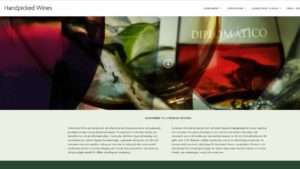
This is precisely what happened when the pandemic struck and restaurants and other service companies closed down, and also the supply of goods took longer or ceased due to chaos in the transport industry. BKWine Magazine’s Carl-Erik Kanne met Margareta Lundeberg, one of the founders of Handpicked Wines, a Swedish wine importer, and talked about how they have weathered the storm.
Read more in Carl-Erik Kanne’s article on BKWine Magazine: How Handpicked Wines survived the pandemic and thrived on its corporate culture.
Record low wine production in 2021, France loses second place, will we have a shortage? | Per on Forbes
This time of the year we usually get the first estimates of the current year’s wine production, 2021 is no different. It is the OIV that assembles the statistics of global wine production. This time it must have been particularly saddening.

2021 will be a year of (almost) record low production, a drop of 4% from 2020 that already was a small harvest. It is the three big countries – Italy, France and Spain – that have all been hit by bad weather almost all through the growing season. Worst hit was France with 27% less wine than in 2020. This means that Spain becomes the second biggest wine producer.
However, news is not all bad. The rest of the world has done well in terms of quantity. And many wine regions, also in the hard-hit European countries, will see good quality.
Read more in Per’s article on BKWine Magazine originally published on Forbes: 2021 wine production hits record low, Spain takes second place from France | Per on Forbes.
Time to discover Erbaluce di Caluso, white from Piedmont? Per on Forbes
One of the charms of exploring the world of wine is to discover new wines, wines that may surprise you. Or simply wines that you didn’t know existed, but that you put on your to-drink list (better than a to-do list) when you have taste them.

Erbaluce di Caluso is perhaps one of those wines for you. The region is less than half the size of the already small region of Barbaresco, only 240 hectares. Yet, it produces a wide variety of wine styles. We’ll take you on a whirlwind tour of Erbaluce di Caluso.
Read more in Per’s article on BKWine Magazine originally published on Forbes: Erbaluce di Caluso, a tiny white wine appellation in Piedmont worth discovering | Per on Forbes.
Wine Tours
Some information on our current and future wine tours. Book a wine tour with the “world’s top wine tour operator” today (or when you feel like travelling to wine country).
Bordeaux, a wine icon and and an inspiration for you on our Bordeaux wine tour
It is a must for every wine lover to visit Bordeaux, at least once. It is the world’s most famous and classic wine region. But it is also a region with lots of exciting new developments happen and entrepreneurship thrives.
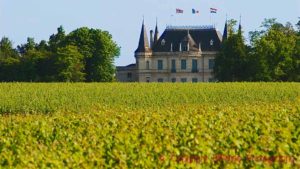
Join us on this tour that will take us to big, prestigious chateaux in Médoc and Graves and also to smaller, high-quality ones in, for example, Saint Emilion. Some of the magnificent lunches will be at the chateaux with classic French gastronomy. We will taste a number of extraordinary wines and learn about the challenges facing Bordeaux today.
Every wine lover should visit Bordeaux.
- Wine tour to Bordeaux, April 20-24, 2022
- Wine tour to Bordeaux, October 2-6, 2022 (This autumn tour will also be offered in combination with the Champagne tour)
The programmes for 2022 are now available.
Book your wine tour with BKWine now!
Champagne, 100% sparkling but an amazing variety that you will discover on this wine tour
Even though champagne always is a sparkling wine, there are many different styles. Much more variation than one might think. You actually never tire of tasting champagne. Who could tire of champagne?
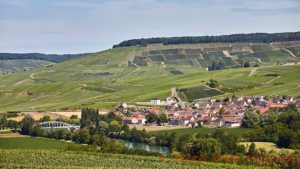
You can always discover something new. Each house has its own style. And the smaller producers make champagne with character and personality, the famous “grower’s champagnes”. A blanc de blanc tastes different from a blanc de noir, a brut zéro from a brut. Nowadays you can also find magnificent 100 % pinot meunier. The age of the champagne makes a difference. And so on. A sparkling world to discover.
- Wine tour to Champagne, May 4-8, 2022
- Wine tour to Champagne, September 28-October 2, 2022 (This autumn tour will also be offered in combination with the Bordeaux tour)
The programmes for 2022 are now available.
Book your wine tour with BKWine now!
The Grand Wine Tour that combines two world famous French wine regions, Champagne and Bordeaux, for you to enjoy
You don’t have to choose whether to go to Bordeaux or to Champagne. How could you choose between the two? Instead, you can go to both wine regions. This aptly named “Grand Wine Tour” combines these two great regions during an intense but absolutely stunning 9-day tour.
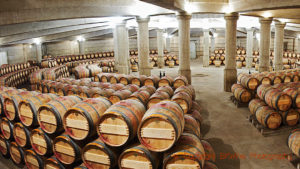
We will stay in Reims when in Champagne (not to miss then UNESCO rated cathedral) for four nights and in Bordeaux for four nights.
We start in champagne. After a few exciting days with many champagne tastings and delicious champagne lunches, the high-speed train will take us to the magnificent city of Bordeaux. We will enjoy tastings at the chateaux, Médoc and Graves and on the right bank, in Saint Emilion. Don’t miss this quite unique opportunity to visit the two most famous wine regions in the world in one very enjoyable go.
- Wine tour to Champagne and Bordeaux, September 28 – October 6, 2022
The programmes for 2022 is now available.
Book your wine tour with BKWine now!
South America 2023: A spectacular wine tour in Argentina and Chile to discover the wines and winemakers
A wine tour in South America is a real adventure. We start in Buenos Aires, we will get acquainted with Argentina’s tango tradition. Then we will continue to Mendoza, the most prominent wine region in the country.
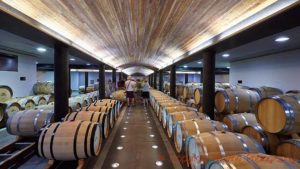
The Andes Mountains are close, and the vineyards are climbing higher and higher on the mountain slopes. The scenery is spectacular, as are the wines. Not to mention the world-famous meat and the fresh vegetables, grilled outside on big barbecues for our lunches. A bit different than January back home.
Our bus will then take us to Chile over the Andes Mountains, a fascinating journey through strange landscapes. We will go all the way to the Pacific Coast and taste pinot noir and sauvignon blanc in Casablanca Valley and San Antonio. And fish and seafood. We continue south to the small town of Santa Cruz and the wine region of Colchagua, known primarily for its red wines. We’re in real rural Chile. Lunch under the avocado tree perhaps? We end the tour in the Chilean capital, Santiago.
Join us on our wine tour to South America!
- Wine tour to Chile-Argentina, January, 2023
Book your wine tour with BKWine now!
South Africa 2023: discover fantastic wines in a fantastic country on this wine tour
South Africa has superb, almost unique natural conditions for making exciting wines. Today the growers take advantage of these conditions to create great wines. And they want to experiment.
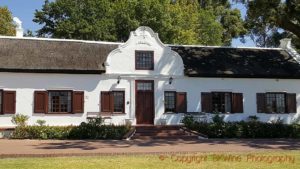
They use old vines whenever possible; they promote old grape varieties, such as cinsault, carignan and grenache (or have you heard of “chenil”?). To this, we can add the country’s own grape variety, pinotage, which is finally being acknowledged as the high-quality grape it really is. Cabernet sauvignon and syrah are doing very well indeed thank you, in Stellenbosch, one of the regions we will visit during our tour. We also go to Franschhoek, Walker Bay, Elgin and Swartland. Almost all of vinous South Africa, classic and avant-garde.
We start the tour in beautiful Cape Town. We will admire the view from Table Mountain, we will get to know the flavourful Malay cuisine, and we will visit the legendary Cape of Good Hope.
Discover South Africa on a wine tour with us.
- Wine tour to South Africa, February 2023
Book your wine tour with BKWine now!
A great experience in a small country: wine, gastronomy, culture and nature on the wine tour in New Zealand 2023
Our tour to New Zealand is not “just” a wine tour. It is also a journey where we get to know the country, the culture, the food and nature. The tour starts with a couple of days in the country’s largest city, but not the capital, Auckland.
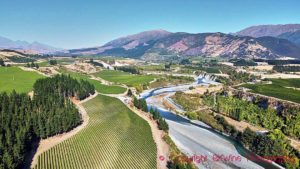
Here we take the opportunity to visit Waiheke Island, known for its Bordeaux blends. Our bus then takes us south through the North Island and wine regions such as Hawkes Bay and Wairarapa.
We take the ferry across to the South Island (maybe a dolphin sighting if we’re lucky) and we continue in our comfortable bus to Marlborough, the world’s biggest sauvignon blanc producer, and Central Otago, famous for its delicious pinot noirs. We make a detour to the glaciers around the magnificent Mount Cook, the country’s highest mountain.
We will get to know the wines (and discover that the country has much more to offer than just sauvignon), and we will visit a large number of wine producers. All in all, we will make around 20 wine visits. But with plenty of time for other things too. The tour ends in Queenstown, a lively city in a spectacularly beautiful location.
Join us on our New Zealand tour, a great adventure.
- Wine tour to New Zealand, March 2023
Book your wine tour with BKWine now!
BKWine
wine journalism and wine travel








